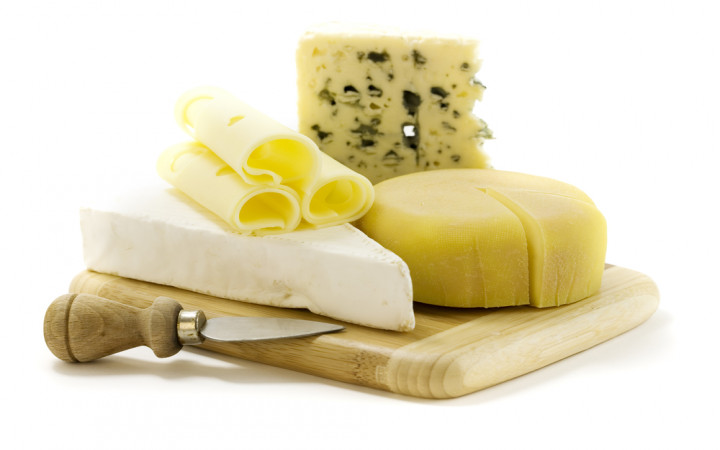Macaroni and cheese, grilled cheese, cheeseburgers…isn't cheese WONDERful? We think it is. Well, most of the time it is.
Sometimes, though, certain cheeses can be a bit on the stinky side. Have you ever gotten a whiff of a gourmet cheese that made you turn up your nose? Whew! What's up with that?
All cheeses are made in basically the same way: by curdling milk so that it separates into curds and whey. Curds are solid white lumps, and whey is a thin, watery liquid.
One of the most basic combinations of curds and whey is cottage cheese. Many historians believe it was a form of cottage cheese that Little Miss Muffet ate while sitting on her tuffet.
To make cheese, milk is first heated to kill any harmful bacteria. After the milk cools, it is put into large containers. A starter culture of special bacteria is then added. These bacteria break down the sugar found in milk (called lactose) into lactic acid.
After the starter culture, rennet is added. Rennet contains an enzyme that makes the proteins in the milk (called casein) coagulate. This makes the milk separate into solids (curds) and liquids (whey).
Once solid curds have formed, they are cut into smaller pieces to release more whey. The mixture is then heated in a process called syneresis to release even more whey.
The whey is then drained off, leaving only the curds behind. The curds will then begin to clump together in a process called cheddaring. Salt is often added at this point to improve taste and remove additional moisture.
The salted curds are eventually pressed into blocks and cooled until they form solid blocks. The solid blocks of cheese are then stored for several weeks to several months to allow them to ripen until they are ready to eat.
Different types of cheeses are made by using different starter cultures or slightly varying the steps of the cheese-making process. For example, mozzarella cheese is kneaded like bread dough to give it its signature stretchy texture.
So why do some cheeses stink and some have hardly any smell at all? The answer lies mainly in the starter culture used to make the cheese. The bacteria that make up the starter culture helps determine a cheese's taste, texture, and smell.
For example, some bacteria give cheese a mushroom flavor and a particularly-stinky odor. Examples of such cheeses include Brie and Camembert.
Other factors that can make cheeses especially stinky are aging and washing. Some cheeses are aged for many months. The extra aging often intensifies the cheese's aroma.
The rinds (edges of blocks) of cheeses are sometimes washed often as the cheeses ripen to keep them moist. Depending upon what liquid is used — brandy, port, beer, and salt water are commonly used — the cheese may develop certain flavors and smells over time with repeated washings.
If you're wondering what the stinkiest cheeses in the world are, there are several that are known for their particularly-pungent aromas. Vieux Boulogne is known for being stinky because its rind is brushed with beer while it ages. Another cheese — Époisses de Bourgogne — is so stinky that it has actually been banned from being carried on public transportation in France where it is made!
Perhaps the most famous stinky cheese ever, though, is Limburger. Its stinky reputation is well-documented in many Saturday-morning cartoons, as well as old television classics like The Three Stooges and The Little Rascals.
Some believe Limburger cheese smells like feet, which might make sense. The bacterium used to create Limburger cheese is Brevibacterium linens, which is the same bacteria responsible for human body odor!




